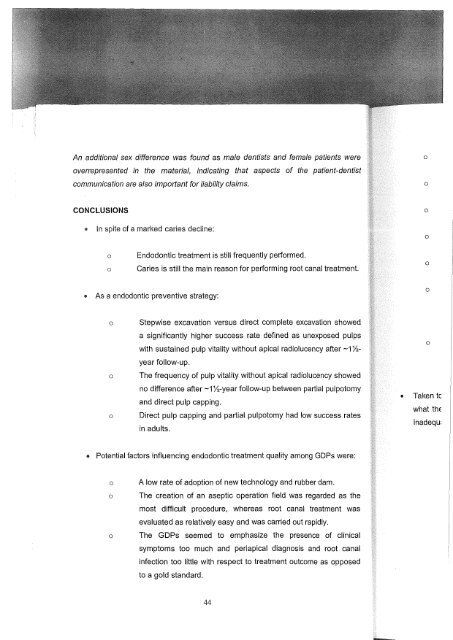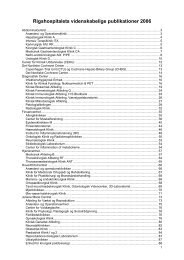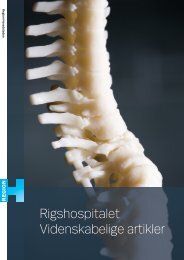View - CTU
View - CTU
View - CTU
You also want an ePaper? Increase the reach of your titles
YUMPU automatically turns print PDFs into web optimized ePapers that Google loves.
An additional sex difference was found as male dentists and female patients were<br />
overrepresented in the material, indicating that aspects of the patient-dentist<br />
communication are also important for liability claims.<br />
0<br />
0<br />
CONCLUSIONS<br />
• In spite of a marked caries decline:<br />
o Endodontic treatment is still frequently performed.<br />
0 Caries is still the main reason for performing root canal treatment.<br />
0<br />
0<br />
0<br />
• As a endodontic preventive strategy:<br />
0<br />
o Stepwise excavation versus direct complete excavation showed<br />
a significantly higher success rate defined as unexposed pulps<br />
with sustained pulp vitality without apical radiolucency after -1 %<br />
year follow-up.<br />
o The frequency of pulp vitality without apical radiolucency showed<br />
no difference after -1%-year follow-up between partial pulpotomy<br />
and direct pulp capping.<br />
0 Direct pulp capping and partial pulpotomy had low success rates<br />
in adults.<br />
0<br />
111 Taken tc<br />
what the<br />
inadequ;<br />
111 Potential factors influencing endodontic treatment quality among GDPs were:<br />
o<br />
o<br />
o<br />
A low rate of adoption of new technology and rubber dam.<br />
The creation of an aseptic operation field was regarded as the<br />
most difficult procedure, whereas root canal treatment was<br />
evaluated as relatively easy and was carried out rapidly.<br />
The GDPs seemed to emphasize the presence of clinical<br />
symptoms too much and periapical diagnosis and root canal<br />
infection too little with respect to treatment outcome as opposed<br />
to a gold standard.<br />
44








